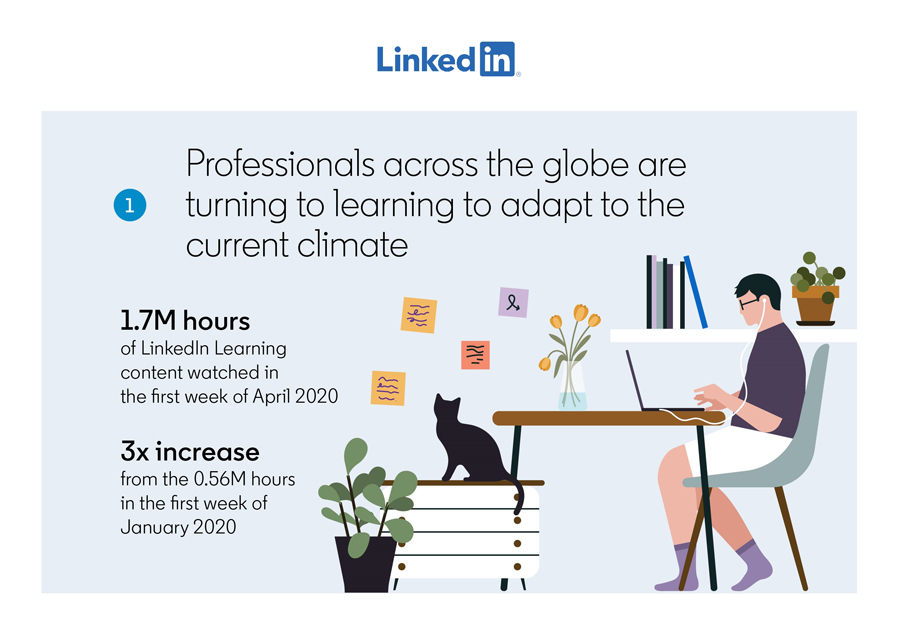Professionals are turning to learning to adapt to the current climate
Learners watched over 7.7 million hours of LinkedIn Learning content in April, which is nearly three times the amount in February and two times the amount in March.
In the first week of April, people watched 1.7M hours of learning content on LinkedIn Learning. For reference, people watched 0.56M hours in the first week of January, which is a three times increase.
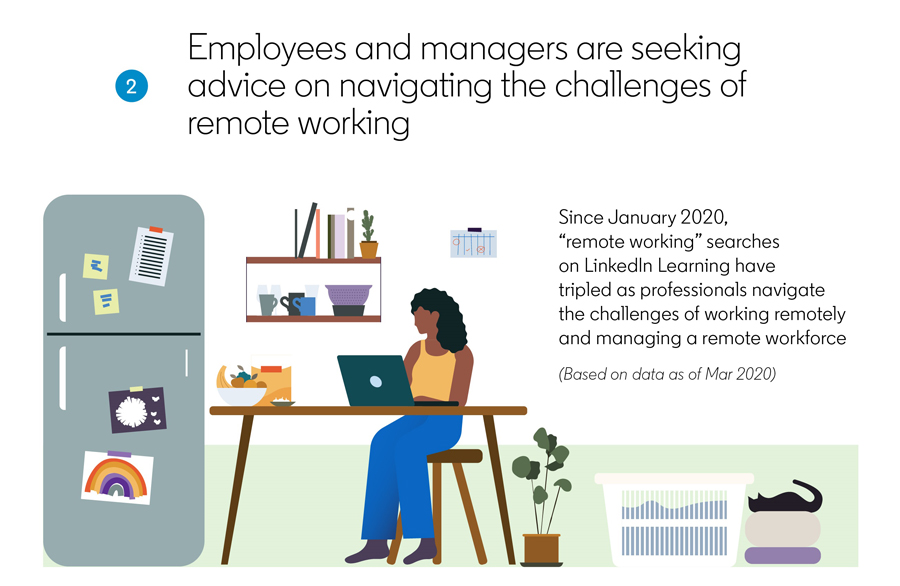
What learning content are professionals consuming?
• Since January 2020 “remote working” searches on LinkedIn Learning have tripled as both employees and managers increasingly look for advice on how to navigate the challenges of working remotely and managing a remote workforce. (As of end March 2020)
• Working from home skills have seen dramatic growth since the onset of COVID-19. There has been an increase in the number of learners developing these skills by watching relevant courses on LinkedIn Learning from Jan + Feb vs. March + April 2020:
• Zoom+ 6086%
• Virtual Work + 5804%
• Telecommuting +5705%
• Virtual Teams +4505%
• Collaboration Solutions +3123%
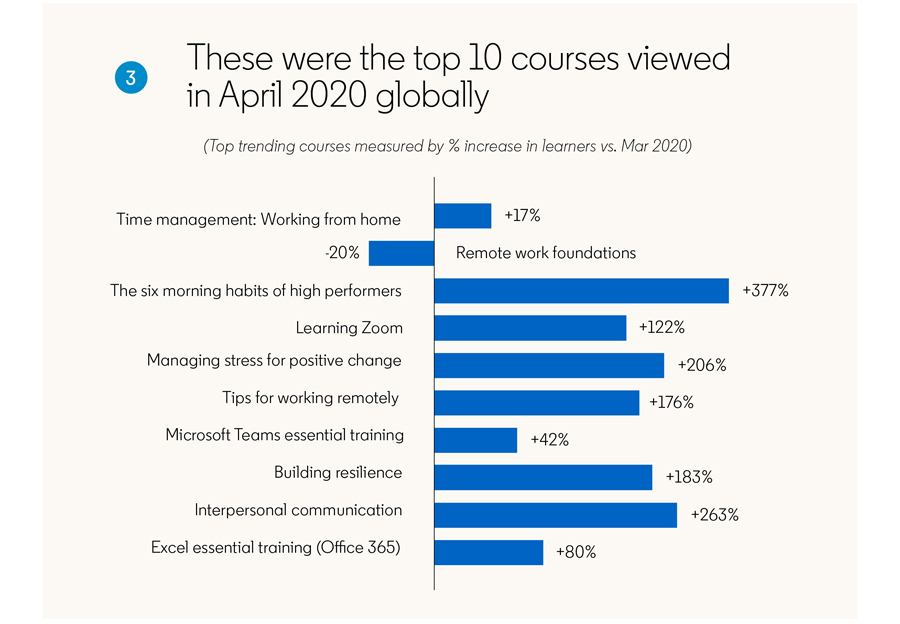
• We’re seeing growth across many course topics. These are top 10 courses viewed in April vs March 2020 globally.
• Time Management: Working from Home (+17%)
• Remote Work Foundations (-20%)
• The Six Morning Habits of High Performers (+377%)
• Learning Zoom (+122%)
• Managing Stress for Positive Change (+206%)
• Tips for Working Remotely (+176%)
• Microsoft Teams Essential Training (+42%)
• Building Resilience (+183%)
• Interpersonal Communication (+263%)
• Excel Essential Training (Office 365) (+80%)
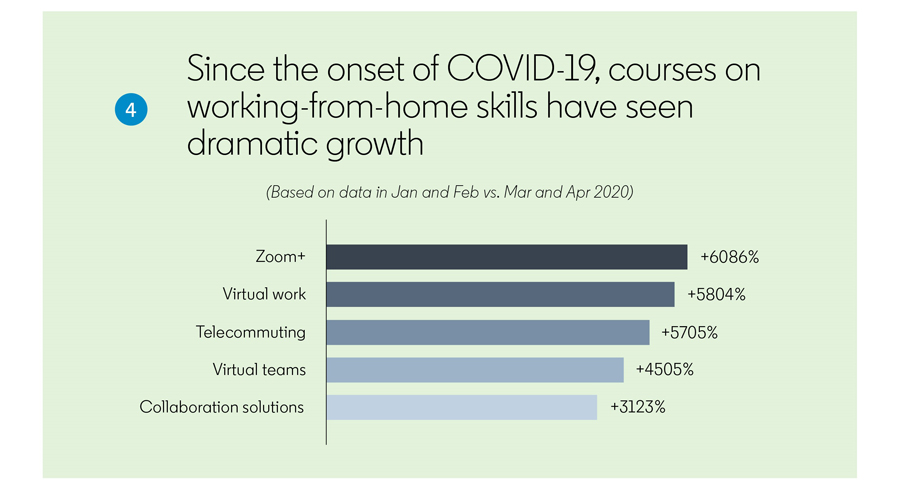
Which audiences are consuming online learning?
• Based on data pre-COVID-19 (January and February 2020) vs during-COVID-19 (March and April 2020), we have seen an increase in the way these audiences are utilizing learning to adjust to the new economic and work environment.
• Managers + 105%
• Job Seekers + 86%
• C-level + 79%
• New Hires + 73%
Which industries have shown higher take-up rates in online learning?
• From March vs April 2020, these five functions had the greatest increase in activity in learning.
• Sales +116%
• Purchasing +106%
• Operations 98%
• Healthcare Services 98%
• Administrative 95%
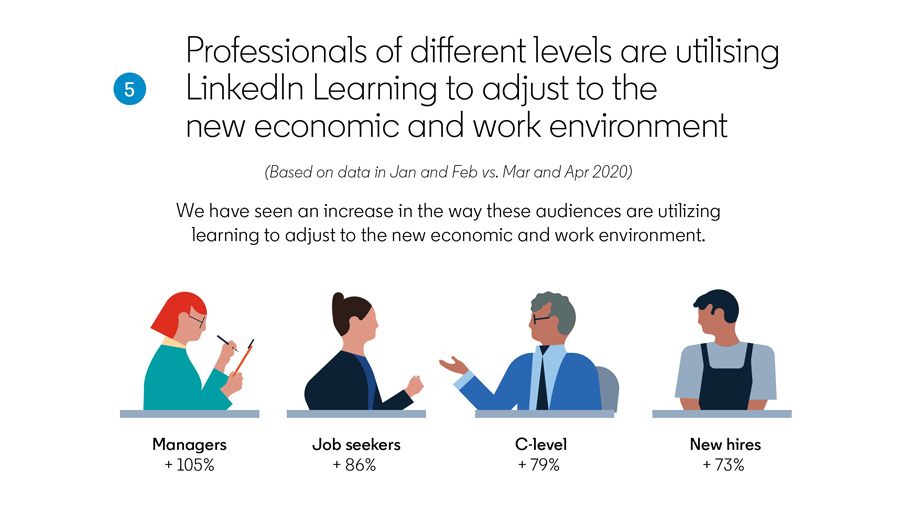
• Although all professionals have increased time watched, these ten industries had the greatest increase in activity (by total hours) from March vs April 2020.
• Recreation & Travel +132%
• Real Estate +106%
• Consumer Goods +106%
• Energy & Mining +92%
• Manufacturing +91%
• Retail +88%
• Public Administration 87%
• Wellness + Fitness +86%
• Construction +86%
• Health Care +82%
Social learning is on the rise
• Based on data pre-COVID-19 (January and February 2020) vs during-COVID-19 (March and April 2020), we are also seeing more people learn together.
• 301% increase in professionals joining Learning Groups.
• 153% increase in courses shared.
• 111% increase in contributions to Learning Q&As.
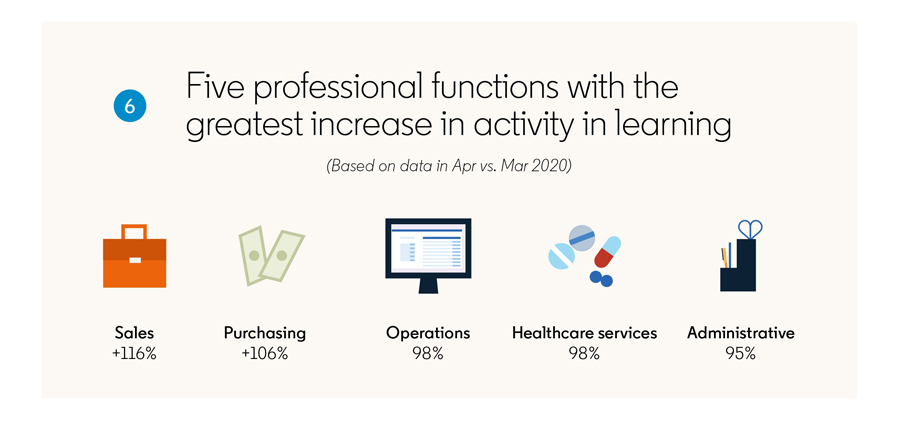
LinkedIn’s resources to help professionals learn in the digital space
• There are over 275 free LinkedIn Learning courses across seven languages (English, German, French, Spanish, Japanese, Chinese and Portuguese), from navigating this new climate, including tips to stay productive, how to build relationships when you’re not face-to-face, and the importance of self care.
• We have resources to help job seekers in this current climate.
• For those adjusting to working remotely, we’ve also put together a series of resources to help them remain productive during this time.
• We also have resources for small-to-medium businesses, to help them navigate the challenges of today’s economy.
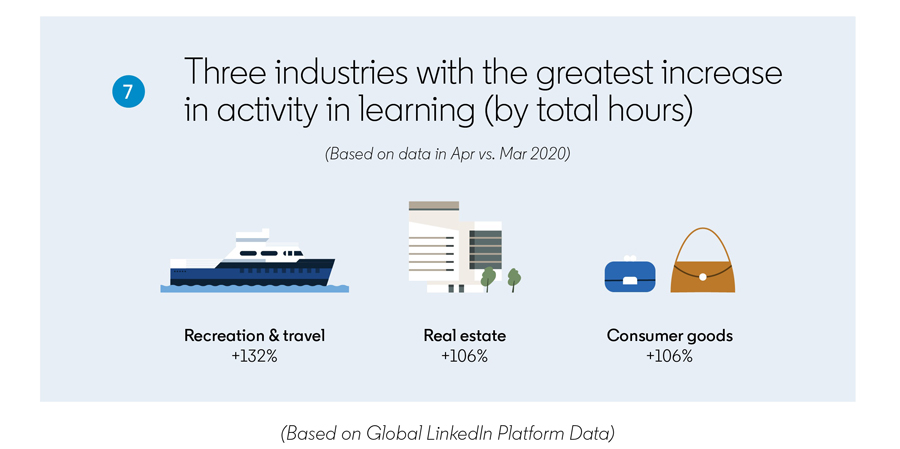
Perspective from Feon Ang, Vice President , Talent and Learning Solutions, Asia Pacific
“The global pandemic has affected our professional, and personal lives. We’ve seen that hiring has declined across the globe. In addition, many organisations have transitioned their workforce to working remotely.
Regardless of where you are at in your career, it is worth picking up new skills, or honing your current ones, during this time. For job seekers, honing interviewing skills and learning to grow and tap on networks may be useful. For professionals, skills related to remote working are essential to hone. For leaders, understanding how to manage teams virtually, keeping team members engaged, and the organisational culture alive is important. In addition, soft skills remain relevant across a wide range of jobs. Creativity, Persuasion, Collaboration, Adaptability, Emotional intelligence rank as the top five soft skills in 2020.
Learning new ways of working in the current climate or being open to reskilling and upskilling opportunities will also ensure that professionals continue to gain transferable skills that might be useful for the future. For example, today, remote working is increasingly an expectation in a multigenerational workforce. In fact, a global survey showed that 45% of senior leaders say they’re considering a more permanent shift to virtual events or conferences, and 44% say they’re evaluating more permanent remote work policies. This may indicate that it is here to stay.”
Liked this post? Follow SwirlingOverCoffee on Facebook, YouTube, and Instagram.


